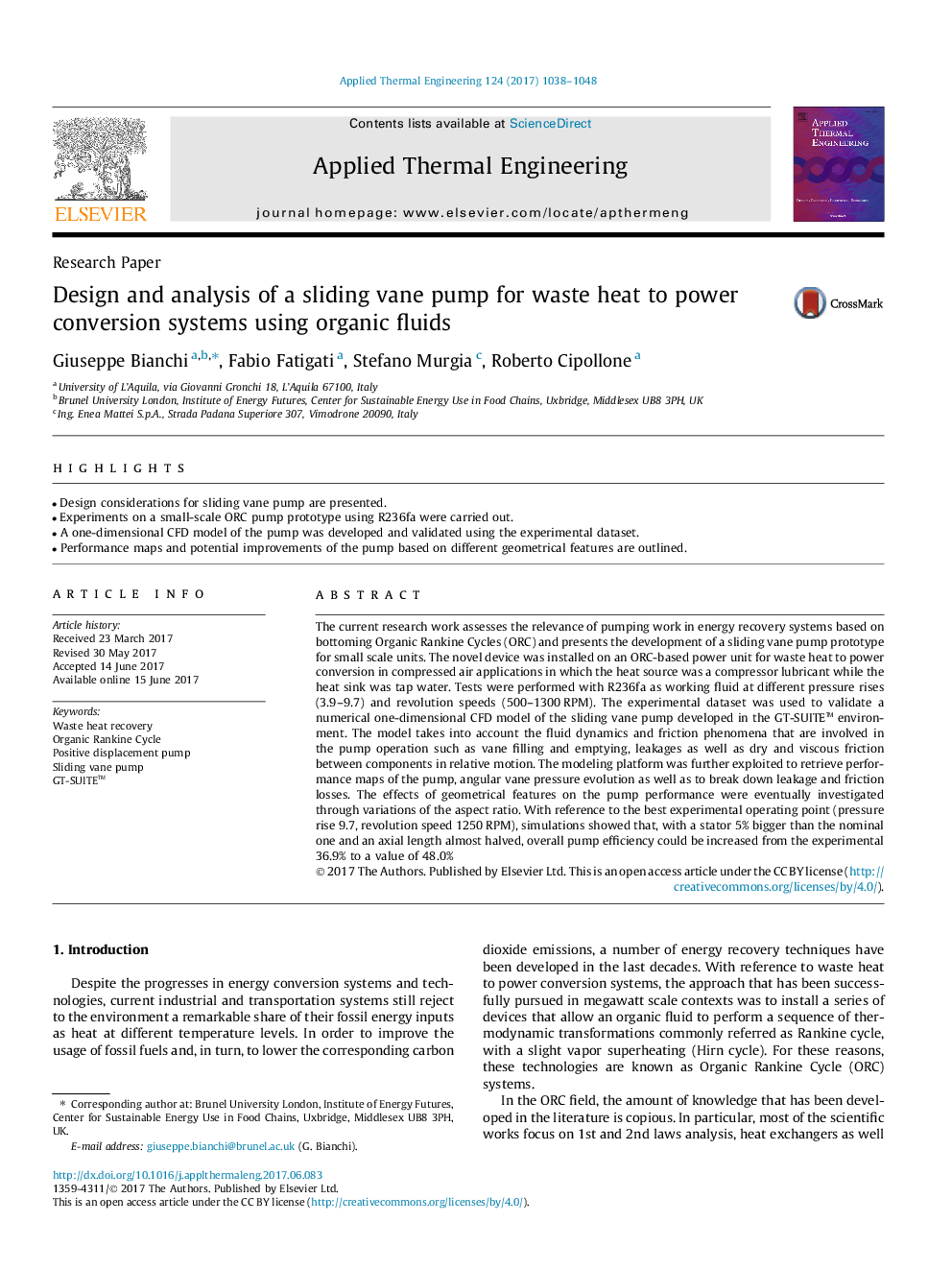| کد مقاله | کد نشریه | سال انتشار | مقاله انگلیسی | نسخه تمام متن |
|---|---|---|---|---|
| 4990684 | 1457105 | 2017 | 11 صفحه PDF | دانلود رایگان |
- Design considerations for sliding vane pump are presented.
- Experiments on a small-scale ORC pump prototype using R236fa were carried out.
- A one-dimensional CFD model of the pump was developed and validated using the experimental dataset.
- Performance maps and potential improvements of the pump based on different geometrical features are outlined.
The current research work assesses the relevance of pumping work in energy recovery systems based on bottoming Organic Rankine Cycles (ORC) and presents the development of a sliding vane pump prototype for small scale units. The novel device was installed on an ORC-based power unit for waste heat to power conversion in compressed air applications in which the heat source was a compressor lubricant while the heat sink was tap water. Tests were performed with R236fa as working fluid at different pressure rises (3.9-9.7) and revolution speeds (500-1300 RPM). The experimental dataset was used to validate a numerical one-dimensional CFD model of the sliding vane pump developed in the GT-SUITE⢠environment. The model takes into account the fluid dynamics and friction phenomena that are involved in the pump operation such as vane filling and emptying, leakages as well as dry and viscous friction between components in relative motion. The modeling platform was further exploited to retrieve performance maps of the pump, angular vane pressure evolution as well as to break down leakage and friction losses. The effects of geometrical features on the pump performance were eventually investigated through variations of the aspect ratio. With reference to the best experimental operating point (pressure rise 9.7, revolution speed 1250 RPM), simulations showed that, with a stator 5% bigger than the nominal one and an axial length almost halved, overall pump efficiency could be increased from the experimental 36.9% to a value of 48.0%
Journal: Applied Thermal Engineering - Volume 124, September 2017, Pages 1038-1048
